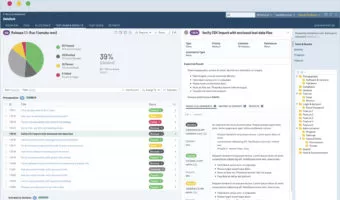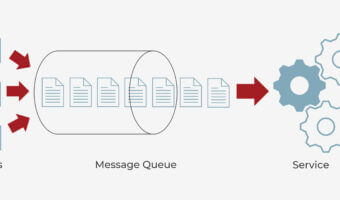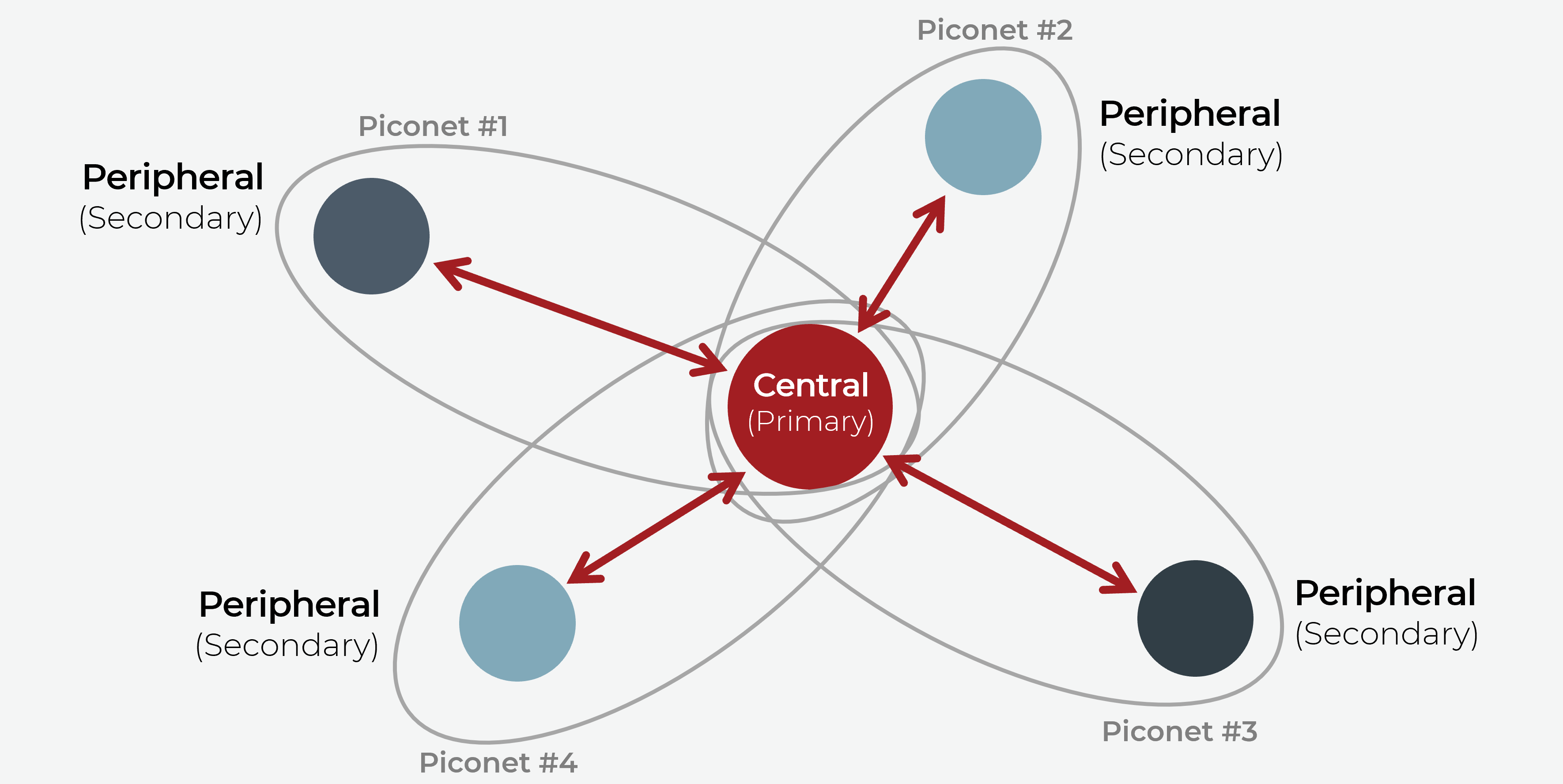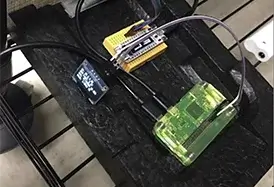HomeBlog
Our product design and development blog focuses on sharing our experience and knowledge across a wide range of technologies and industries including hardware and software design, audio, video, internet of things, mobile application and signal processing technologies.
 Why We Use TestRail for Software Testing
Quality Assurance
By Pablo Maurin
Software testing in the real world can be challenging. Ahead of an upcoming webinar, our director of QA engineering discusses why we use TestRail for our test case management at Cardinal Peak.
Details
Why We Use TestRail for Software Testing
Quality Assurance
By Pablo Maurin
Software testing in the real world can be challenging. Ahead of an upcoming webinar, our director of QA engineering discusses why we use TestRail for our test case management at Cardinal Peak.
Details
 Choosing a Queuing Service — Part I
Cloud Transformation
By Matt Osminer
From what a queue is to different types of queues, our engineering expert details why choosing a queue requires careful consideration in part one of this blog series.
Details
Choosing a Queuing Service — Part I
Cloud Transformation
By Matt Osminer
From what a queue is to different types of queues, our engineering expert details why choosing a queue requires careful consideration in part one of this blog series.
Details
 How To: Cardinal Peak’s Amazon Alexa Design Guide
Voice
By Bernard Vachon
Adding Alexa functionality to your product is no simple task. From connectivity, acoustics and mechanical design to power, UX and the environment in which the device will be used, there are myriad steps and considerations in the Amazon Alexa design process.
Details
How To: Cardinal Peak’s Amazon Alexa Design Guide
Voice
By Bernard Vachon
Adding Alexa functionality to your product is no simple task. From connectivity, acoustics and mechanical design to power, UX and the environment in which the device will be used, there are myriad steps and considerations in the Amazon Alexa design process.
Details
 How To Overcome Machine Learning Model Training Challenges
Software Development
By Brian Opiyo
Struggling to overcome machine learning model training challenges? Check out this post for tips and tricks from our engineering experts.
Details
How To Overcome Machine Learning Model Training Challenges
Software Development
By Brian Opiyo
Struggling to overcome machine learning model training challenges? Check out this post for tips and tricks from our engineering experts.
Details
 How To Train Machine Learning Models
Software Development
By Brian Opiyo
Training a machine learning model? In this post, our expert engineer details what all is required to effectively train a machine learning model and details some best practices for effectively training machine learning models.
Details
How To Train Machine Learning Models
Software Development
By Brian Opiyo
Training a machine learning model? In this post, our expert engineer details what all is required to effectively train a machine learning model and details some best practices for effectively training machine learning models.
Details
 What is BLE, and How Do its Related GAP and GATT Profiles Work?
Audio
By Scott Stewart
Bluetooth Low Energy (BLE) is a wireless communication technology used for low power devices such as smartphones, wearables and IoT devices. Learn from our audio experts how the Generic Attribute Profile (GATT) and the Generic Access Profile (GAP) work together to allow BLE devices to communicate with each other.
Details
What is BLE, and How Do its Related GAP and GATT Profiles Work?
Audio
By Scott Stewart
Bluetooth Low Energy (BLE) is a wireless communication technology used for low power devices such as smartphones, wearables and IoT devices. Learn from our audio experts how the Generic Attribute Profile (GATT) and the Generic Access Profile (GAP) work together to allow BLE devices to communicate with each other.
Details
 How Bluetooth is Used for Digital Contact Tracing
Connected Devices and IoT
By Scott Stewart
Digital Contact Tracing and Exposure Notification apps provide a hands-on exploration of Bluetooth Low Energy (BLE) technology, GAP & GATT. Our engineer compares multiple Linux BLE Sniffing Tools including Hcitool, Bluetoothctl, Hcidump and Gatttool.
Details
How Bluetooth is Used for Digital Contact Tracing
Connected Devices and IoT
By Scott Stewart
Digital Contact Tracing and Exposure Notification apps provide a hands-on exploration of Bluetooth Low Energy (BLE) technology, GAP & GATT. Our engineer compares multiple Linux BLE Sniffing Tools including Hcitool, Bluetoothctl, Hcidump and Gatttool.
Details
 What is FreeRTOS?
Connected Devices and IoT
By Howdy Pierce
FreeRTOS is a wonderful choice for a whole class of small embedded devices. Whether discussing its simplicity and ubiquity or its small size and open-source nature, the real-time operating system aspect is actually the least interesting thing about FreeRTOS.
Details
What is FreeRTOS?
Connected Devices and IoT
By Howdy Pierce
FreeRTOS is a wonderful choice for a whole class of small embedded devices. Whether discussing its simplicity and ubiquity or its small size and open-source nature, the real-time operating system aspect is actually the least interesting thing about FreeRTOS.
Details
 Internet of Things Testing Challenges and Considerations
Connected Devices and IoT
By Alex Rosa
Successful IoT testing ensures an optimal user experience, as well as efficient product design. Our expert engineer shares IoT testing challenges and considerations for connected devices, including hardware, software, security and cloud.
Details
Internet of Things Testing Challenges and Considerations
Connected Devices and IoT
By Alex Rosa
Successful IoT testing ensures an optimal user experience, as well as efficient product design. Our expert engineer shares IoT testing challenges and considerations for connected devices, including hardware, software, security and cloud.
Details
 Efficiency in Connected Device and IoT Testing
Connected Devices and IoT
By Alex Rosa
With the rise of connected devices, IoT testing has taken on increased importance. Our expert test engineer gives a real-world example of how to efficiently test IoT products, including augmenting manual testing by leveraging technology.
Details
Efficiency in Connected Device and IoT Testing
Connected Devices and IoT
By Alex Rosa
With the rise of connected devices, IoT testing has taken on increased importance. Our expert test engineer gives a real-world example of how to efficiently test IoT products, including augmenting manual testing by leveraging technology.
Details
 Migrating from an IoT Platform to Bring Tech In-House
Connected Devices and IoT
By Al Straub
While an end-to-end IoT solution provider is often the fastest path to market, such solutions force IoT devices to be coupled to the external dependencies of a single provider. Our expert engineer highlights how tapping the expertise of a contract engineering company can decrease time to market without increasing staff during migration.
Details
Migrating from an IoT Platform to Bring Tech In-House
Connected Devices and IoT
By Al Straub
While an end-to-end IoT solution provider is often the fastest path to market, such solutions force IoT devices to be coupled to the external dependencies of a single provider. Our expert engineer highlights how tapping the expertise of a contract engineering company can decrease time to market without increasing staff during migration.
Details
26 pages of results